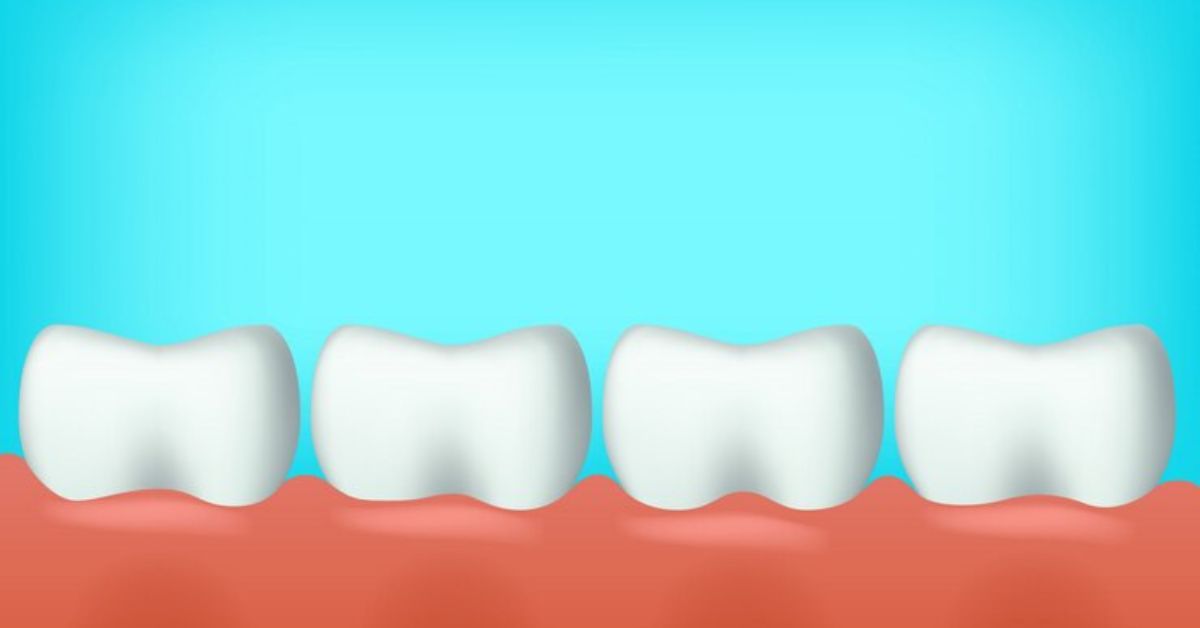Keeping your teeth and gums in good health is important for more than simply your appearance. Cavities between teeth are one of the most common forms of dental disease. They might ruin your dental health if they go undetected for a long time. So, how can you avoid getting cavities, and what are they anyway? Alright, let us begin.
What is a Cavity?
A cavity is essentially a hole in your tooth that forms due to decay. This decay happens when the acids produced by bacteria in your mouth erode your tooth enamel. If left untreated, cavities can penetrate deeper layers of the tooth, leading to more serious dental issues.
Types of Cavities
Cavities can form on different parts of your teeth, including:
Pit and Fissure Cavities: are found on the chewing surfaces of the back teeth.
Smooth Surface Cavities: Develop on the flat exterior surface of the teeth.
Root Cavities: Occur on the surface over the roots, often found in older adults with receding gums.
Interproximal Cavities: Form between the teeth and are often the hardest to spot and treat.
Poor Oral Hygiene
Neglecting regular brushing and flossing allows plaque, a sticky film of bacteria, to build up. This plaque produces acids that erode the tooth enamel, leading to cavities.
Sugary and Acidic Foods
Consuming foods and drinks high in sugar and acids, like candies, sodas, and citrus fruits, can contribute to tooth decay. These substances feed the bacteria in your mouth, which in turn produce more harmful acids.
Bacteria and Plaque Buildup
Your mouth is home to numerous bacteria. Some of these bacteria are beneficial, but others can be harmful, especially when they combine with food particles to form plaque. Over time, if not removed, plaque hardens into tartar, which can further promote decay.
Genetics and Susceptibility
Your genetic makeup can influence how susceptible you are to cavities. Factors such as the strength of your enamel, the composition of your saliva, and the shape of your teeth can all play a role.
Tooth Sensitivity
One of the earliest signs of a cavity is increased sensitivity to hot, cold, or sweet foods and drinks. If you notice a twinge of pain when you consume these, it might be time to visit your dentist.
Visible Holes or Spots
You might notice visible holes or dark spots on your teeth. These are often a clear indication that decay has set in and needs to be addressed promptly.
Pain While Eating
Experiencing pain when chewing or biting down is another common symptom. This pain can range from mild discomfort to sharp, intense pain, depending on the severity of the cavity.
Bad Breath
Persistent bad breath or a bad taste in your mouth can also be signs of cavities. This is because the decay and bacteria produce foul-smelling byproducts.
Dental Check-ups
Regular dental check-ups are crucial for early detection of cavities. Your dentist can spot signs of decay that you might miss.
X-rays and Imaging
X-rays are invaluable tools for detecting cavities, especially those between the teeth that are not visible to the naked eye. They provide a clear picture of the extent of the decay.
Physical Examination
During a routine examination, your dentist will use special instruments to probe your teeth, looking for soft spots or other signs of decay.
Proper Brushing Techniques
Brushing your teeth at least twice a day with fluoride toothpaste is essential. Make sure to use a soft-bristled brush and replace it every three to four months.
Flossing Daily
Flossing helps remove food particles and plaque from between your teeth, where your toothbrush can’t reach. Make it a daily habit to prevent cavities.
Regular Dental Visits
Seeing your dentist regularly for cleanings and check-ups helps keep your teeth in top shape and catch any potential problems early.
Healthy Diet Choices
Eating a balanced diet low in sugary and acidic foods can significantly reduce your risk of cavities. Opt for foods that promote oral health, like dairy products, leafy greens, and nuts.
Fluoride Toothpaste
Fluoride strengthens tooth enamel, making it more resistant to decay. Using fluoride toothpaste is a simple yet effective way to protect your teeth.
Fluoride Treatments
Your dentist might recommend professional fluoride treatments, especially if you’re prone to cavities. These treatments provide a higher concentration of fluoride to help repair and strengthen enamel.
Community Water Fluoridation
Many communities add fluoride to their water supply as a public health measure to help reduce the prevalence of cavities.
Dental Fillings
Fillings are the most common treatment for cavities. Your dentist removes the decayed portion of the tooth and fills it with a durable material like composite resin, amalgam, or gold.
Crowns
For more severe decay, a crown might be necessary. This is a cap that covers the entire tooth, restoring its shape, size, and function.
Root Canals
If the decay has reached the inner pulp of the tooth, a root canal might be needed. This procedure involves removing the infected pulp, cleaning the root canals, and sealing them.
Tooth Extractions
In cases where the tooth is too damaged to be saved, extraction might be the only option. Your dentist will then discuss replacement options like implants or bridges.
Laser Dentistry
Laser dentistry is a modern approach that uses lasers to remove decay, reshape gums, and whiten teeth. It’s less invasive and can be more comfortable than traditional methods.
Dental Sealants
Sealants are thin protective coatings applied to the chewing surfaces of the back teeth. They act as a barrier against plaque and acids.
Inlays and Onlays
Inlays and onlays are types of restorations used to repair moderately damaged teeth. They are custom-made to fit your tooth and are more durable than traditional fillings.
Oil Pulling
Oil pulling involves swishing oil (like coconut or sesame oil) in your mouth for about 20 minutes. It’s believed to reduce bacteria and improve oral health.
Herbal Mouthwashes
Herbal mouthwashes, made with ingredients like tea tree oil and aloe vera, can help reduce bacteria and freshen breath.
Dietary Changes
Incorporating foods that promote dental health, such as crunchy vegetables and cheese, can help maintain strong, healthy teeth.
Avoiding Complications
Catching cavities early can prevent more serious dental problems, such as infections or tooth loss.
Cost-effectiveness
Treating cavities in their early stages is generally less expensive than addressing advanced decay.
Preserving Natural Teeth
Early treatment helps preserve your natural teeth, which is always preferable to extraction and replacement.
Connection to Heart Disease
Studies have shown a link between poor oral health and heart disease. Bacteria from the mouth can enter the bloodstream and contribute to the formation of arterial plaques.
Risk of Infections
Untreated cavities can lead to abscesses and other infections that can spread to other parts of the body.
Effect on Mental Health
Chronic dental pain and aesthetic concerns can impact your mental health, leading to issues like anxiety and depression.
Common Misconceptions
There are many myths about cavities, such as the belief that only children get them or that sugar is the only cause.
Evidence-based Facts
Understanding the true causes and prevention methods can help you take better care of your teeth.
Pediatric Dentistry
Children require specialized dental care to address their unique needs and promote healthy development.
Teaching Good Habits Early
Instilling good oral hygiene habits in children from a young age sets the foundation for a lifetime of healthy teeth.
Managing Fear of Dentists
It’s important to help children feel comfortable with dental visits to prevent fear and anxiety.
Conclusion
Interdental cavities are frequent; however, they are also avoidable. Keeping your teeth healthy and cavity-free is possible if you know what causes them, can identify their symptoms, and take preventative actions. To prevent cavities, it is important to have regular dental checkups, practice good cleanliness, and eat a balanced diet. Stop putting off taking care of your teeth and gums until anything goes wrong.
FAQs
How often should I visit the dentist?
It’s generally recommended to visit the dentist every six months for check-ups and cleanings. However, your dentist might suggest more frequent visits based on your individual needs.
Are cavities between teeth more common than other cavities?
Cavities between teeth, also known as interproximal cavities, are fairly common because they can be harder to clean with just brushing alone. Flossing is crucial to prevent these types of cavities.
Can cavities between teeth heal on their own?
No, cavities cannot heal on their own. They require professional treatment to prevent further decay and complications.
What foods should I avoid to prevent cavities?
Avoid sugary and acidic foods and drinks, as they can promote tooth decay. Instead, opt for a diet rich in fruits, vegetables, whole grains, and dairy products.
Is flossing really necessary if I brush well?
Yes, flossing is essential, even if you brush thoroughly. Flossing removes food particles and plaque from between the teeth, where your toothbrush can’t reach.










